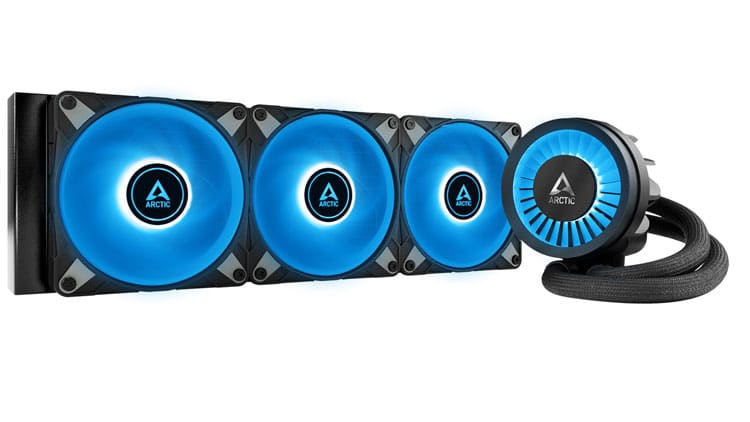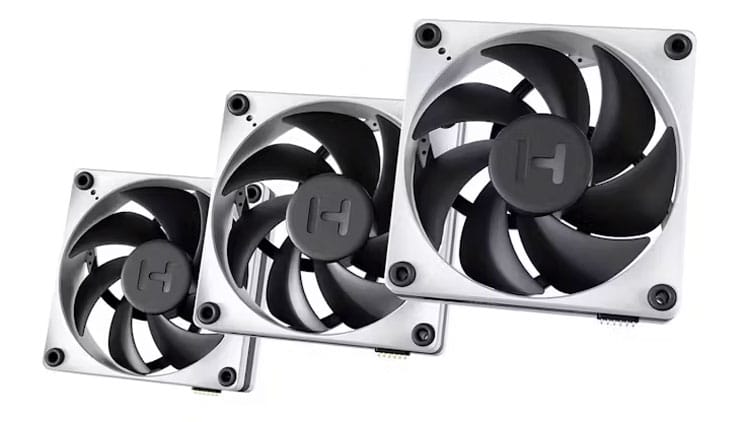This article contains the best Case/Heatsink/Radiator Fan Picks. We created these lists after months of testing, and since we plan to test all cooling fans available on today’s market, expect them to be updated frequently.
| Update Date | Changes |
| 5 February 2024 | New fans added in both 120mm and 140mm categories |
| 26 December 2023 | All fans have been retested using a new methodology/setting on the Longwin apparatus |
| 2 November 2023 | Initial article |
I will include affiliate links for the products we recommend. You don’t pay more using these affiliate links, but you help us keep this site alive and kicking! We also have a Patreon page if you want to support us.
Basic stuff you should be aware of: Fan P-Q Curve
Regardless of its dimensions, every fan, whether DC or AC-powered, has a characteristic curve called P-Q. This curve shows the correlation between the fan’s airflow and its static pressure. With the letter “P,” we describe static pressure, and with “Q,” airflow.
When we refer to a fan’s airflow, we speak about the total amount of air the fan pushes/produces per unit of time. Airflow is usually measured in cubic feet per minute (CFM). Fan manufacturers provide a fan’s CFM in an open environment, without any obstacles in front of it, and this plays a huge role, as you will soon find out through my reviews. When there is no resistance in front of a fan, its airflow is maximum, but this is not the case for most fans, especially the ones used in heatsinks and AIO radiators. Mostly, the fans that are used in chassis don’t face significant resistance.
The maximum static pressure is the fan’s wind pressure in a fully enclosed channel. Static pressure is the air pressure the fan can produce in an enclosure. Static pressure is measured in Pascals (Pa), inches of water (inH2O), or millimeters of water (mmAq). I will use the last.
The most important thing you must know is that the fan will not simultaneously output maximum airflow and static pressure values. Airflow and static pressure have a negative correlation. When airflow increases, static pressure decreases, and when static pressure increases, airflow decreases.
Both airflow and static pressure have to do with airflow resistance, called impedance. When parts block the fan’s airflow, we have impedance, so to find out the complete P-Q curves of a fan, we have to be somehow able to simulate this impedance. Some users use custom-made filters or AIO radiators, but these techniques only simulate a single impedance scenario, so they cannot offer complete P-Q curves. The only way to get the entire P-Q curve of a fan is to have variable impedance, which is what an instrument like the LW-9266 does, based on established measuring standards and with full calibration reports.



The price of these best fans is something I wouldn’t consider. Best value is more important to me
Not all of the fans are expensive. For example, Arctic P12 PST PWM and Arctic P12 Max are about $10 each.
Thank you so much for these in-depth reviews! Currently speccing out fans for a water cooled server -extra thick radiators. Truly appreciate your normalized evaluations of CFM, static pressure, and noise at different speeds and sound levels. Your dedication is unmatched. You’ve easily put out the fairest and most comprehensive review of the SilverStone FHS 120X to date. Look forward to more ultra high performance fan writeups! I’m checking the site every day now!
thank you!!
I don’t see any Noctua ! At least from the point of noise if not else
In the next update. We are enriching our database day by day, re-testing also several fans to improve the accuracy of our results.
Hi! In the original review for the toughfan 12 pro, it ranked consistently lower than the XPG vento pro. However, in your revised list, it is now ranked consistently higher for both airflow and static pressure? Would you now recommend the toughfan 12 pro over the XPG vento pro, or would you stick with the vento pro for heatsinks with only 25mm fan clearance?
Hi! We re-tested again all normalized noise tests, changing some parameters and now we have some changes and the results are more accurate. If you are after higher static pressure, heatsink use, the Toughpro is a bit stronger.
How can we explain tha the #1#2#3 tab doesn’t give the same results as the charts ?
For example :
– Airflow at 20db on the chart : In Win Neptune, Silverstone Vista, Silents Wings Pro 4
– in the tab : Cooler Master Masterfan MF140 Halo2 Arctic P14 PWM PST CO EKWB EK Loop FPT 140 D-RGB
Do you apply some coefficient or something ?
Just forgot to update the 140mm fans, sorry 🙁 Fixed now. Thanks for catching that!
Thanks 😉
I’m looking for a 140mm fan on the front of the case, the best combination between airflow and silence, so your results are quite interesting (and surprising I would say)
Why there is no P12 Max in here, especially when it’s probably the best air pushed compared it’s price, makes no sense not putting it in here honestly. Is it top? Surely not. Best bang for the bucks? Most likely.
Because I haven’t tested it yet.
So t30 seems to be the best performer across static and airflow average wise but I was wondering how does the Phanteks D30-120 stack up for those looking for a white option or rgb?
Have you looked at these fans before ?
I’m looking for 2 fans to replace stock AIO fans and 3 new front case fans. I was just going to buy 5 noctua fans but they don’t even make your list.
InWin topped nearly all the charts in the 140 mm category yet no one else ever talks about them, why do suppose that is? Most of the media talks about Silent Wings, Noctua and other 140mm big name brands. How did InWin win nearly all the 140mm charts? Is the Neptune AN 140 relatively new?
Also – is there a way that you can list the RPM speed at each of the Db levels ? For example, 30DB is xRPM fan speed. Possible to list that?
Many thanks for your feedback! Your testing is the GO-TO for all product purchases. There should be no reason to go anywhere else with the type of scientific testing you have! Many, many thanks for providing this informatio – invaluable!!!!
Regards,
Michael
They are new, yes, released several months ago. Will see to put these graphs also there, sure.
Thank you for your kind words! Appreciate them 🙂
One more question about the InWin AN 140 Fan that you tested and which tops all your 140mm charts. I bought them and installed them. The MINIMUM operating speed is 900 RPM! This is not whisper quiet to begin with. I can clearly hear it. Is there a way to OVERIDE the minium manufactured fan speed?
I found a solution for the AN140 – set your BIOS to DC mode, set it to 0% at all temps, then use Fan Control (look on Github) to manually set the fans. I have them running at 650 rpm and they are whisper quiet at that level. I agree that the lowest PWM RPMs are too loud and make a somewhat annoying noise. From my real world testing, I cannot conclude if the AN140 actually moves a massive amount of air per db, but the RGB does look pretty and was the cheapest 140 RGB fan in my country. I was more impressed with the Lian Li P28 120 I picked up.
Remember that HWbusters measures in a hemi anechoic chamber with a 6db noise floor at 1M to create the 20 db chart. You will never be able to get your fans to the RPM he’s at to reach 20 db in your own real world use case.
Hi! Can you clarify WHICH BeQuiet Silent Wings 4 that you tested which is referenced in the 140mm test? Hi-Speed (2400 rpm) or 1100 RPM? Many thanks for the clarification. For example, you have the Silent Wings 4 at 70% at only 7-ish Db – which is REMARKABLY quiet at 70%. This leads me to believe you tested the 1100 RPM model. Thanks for clarifiying!
-MJ
Here are the max speeds that all fans achieved: https://hwbusters.com/wp-content/uploads/2024/02/Fan_Max_RPM-2.png
Have you tested the Noctua NF-A12x25?
here are all the fans I have tested so far.
https://www.cybenetics.com/index.php?option=fans